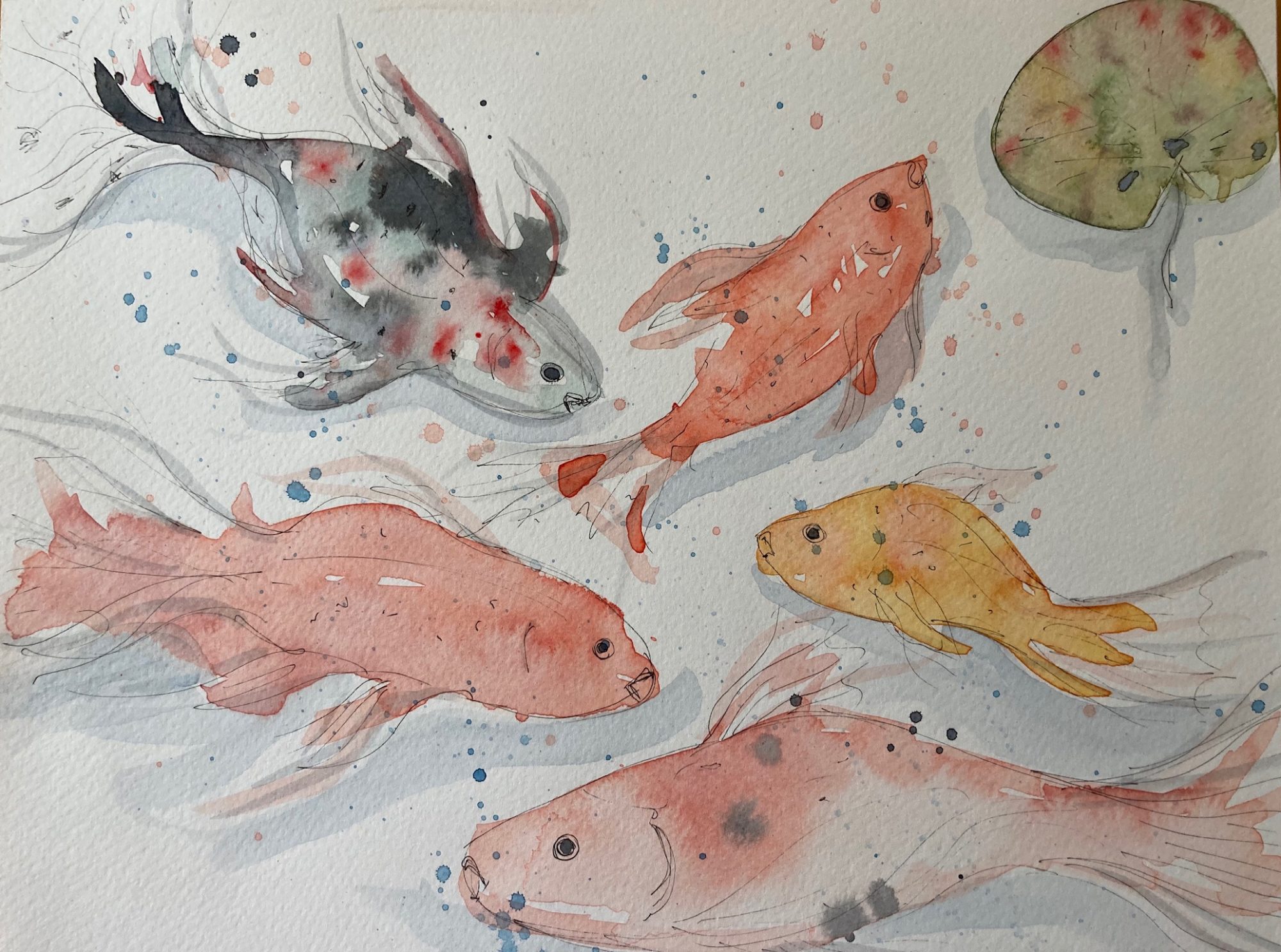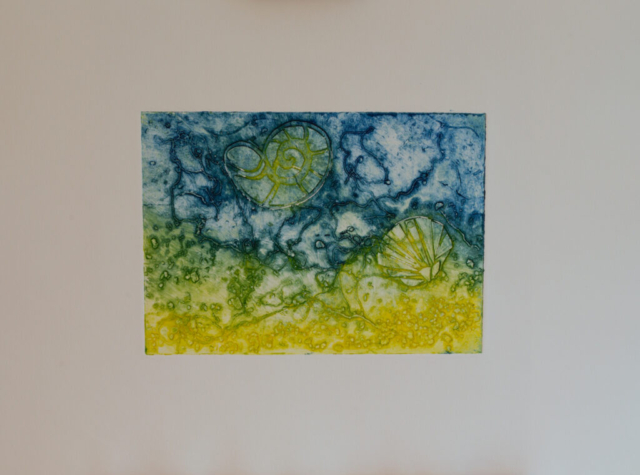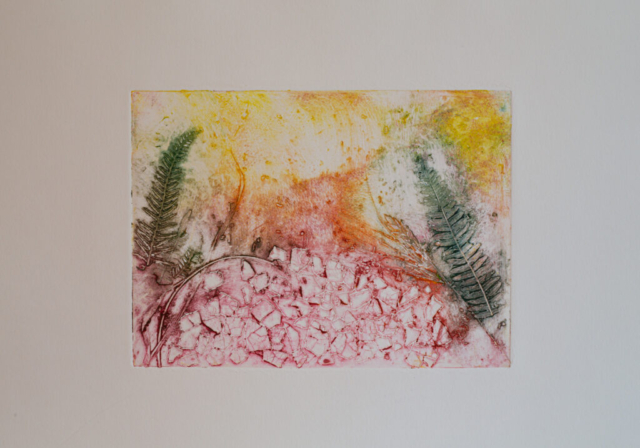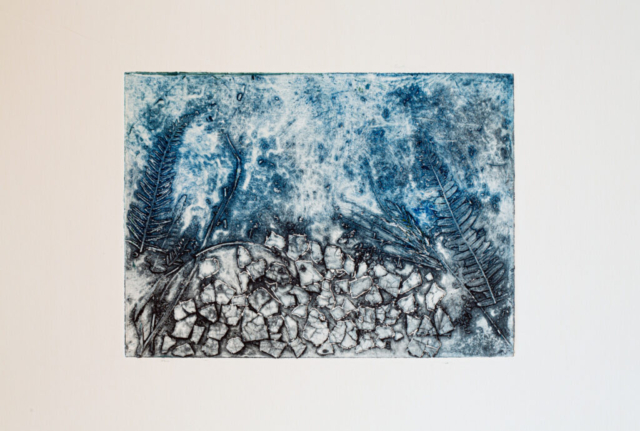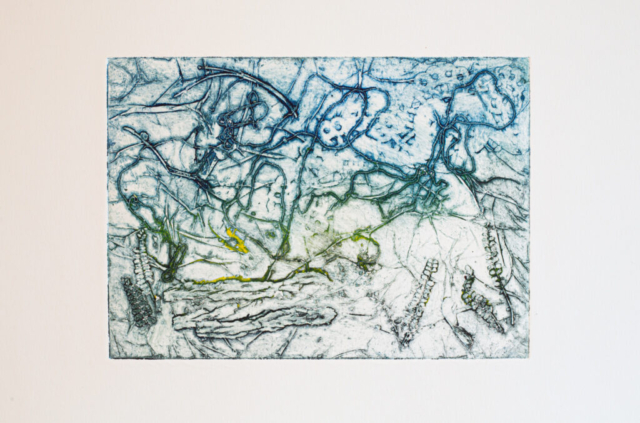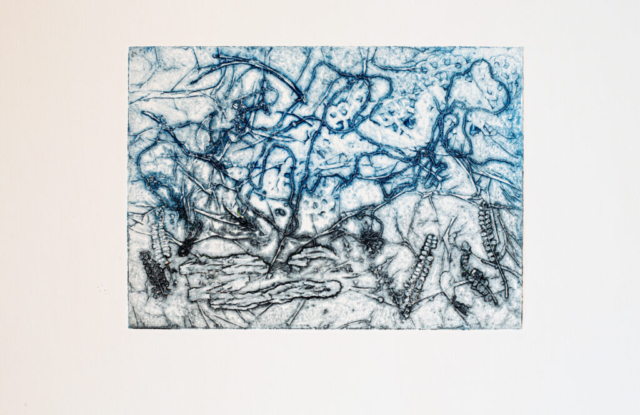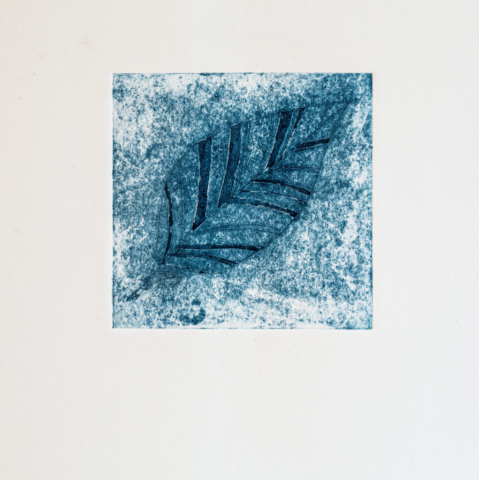Today our fine art technician Kev instructed me in how to use the intaglio print press. (Despite the actual print bed being no bigger then A3, the print wheel was surprisingly resistant to turn.) I don’t have much experience of printing – only linocut – but have participated in induction sessions in dry point etching and screen printing in the uni Print Room last autumn. Collograph printing is a completely new, exciting process to me, although the printing process in principle is very similar to intaglio/dry point.
Kev advised me on how to compose and prepare my print plates on greyboard (mountboard can also be used but locally it was sold in imperial size 0, so I sourced some A4 greyboard from Amazon). He kindly prepared my plates in advance of my print session, as they needed to be varnished with 3 coats of shellac to seal them, (each coat takes time to fully dry before the next) and then he ran each of them through the press, and showed me embossed paper print previews showing the texture of each plate prior to me inking them up this morning. The image surface textures took well, and hadn’t lifted or distorted. The threads, ferns, egg shells and oat flakes remained intact and created some fantastic textures.
I created 3 collograph plates with textures of abstract organic/nature themes using a combination of crinkled tissue paper, found tree bark, paper doily, oats, dried herbs, pressed maidenhair ferns, eggshells and fine cotton threads from a canvas edge, and also made indents into the boards variously using pen lids, a craft knife and scissor blades. I also made a quick small square plate of an engraved leaf, with cut outs (inspired by my friend Lesley Watt’s collographs) which produced better results than I’d anticipated. The intaglio inks I used were Akua5 Speedball Soya water-based in Prussian Blue, Lamp Black, Crimson Red, and Hansa Yellow, and were easy to clean up and wash off. These were first spread individually into small piles (like butter!) onto an acrylic palette, and each ink was applied to my collograph plates with an old toothbrush, then rubbed into the textures with scrim and then “polished” with some newsprint paper until I was happy with the spread and coating of ink on the plates.
The paper used for intaglio and collograph printing is done on thick paper which is pre-soaked in water and then blotted dry and kept damp until use. We only had 300gsm cartridge available at uni. To achieve the best results in the future I can use Arches paper with a heavy cotton content. The collograph plates are placed face-up onto a sheet of register paper on the press bed, and then a sheet damp print paper is placed carefully in line over the top. The little press from the Illustration department has two blankets which are put over the paper-print plate “sandwich”, and a mini workout is then required to turn the wheel pushing the print plate through the rollers. It was an exciting and rewarding process. I’m very happy with the results of my first collograph print session. It’s certainly a print process I’d like to experiment with further, (and also chine colle). I don’t think the prints I have made here are ethereal enough to be collaged or fit within my artwork piece Map of Mindfulness. It was definitely worth experimenting with though, however I will submit them as my body of work as I think they have a mindful quality about them, the printing process was certainly mindful itself. I have to wait to collect them early next week as they need to be completely dried out flat, otherwise the paper will buckle….
